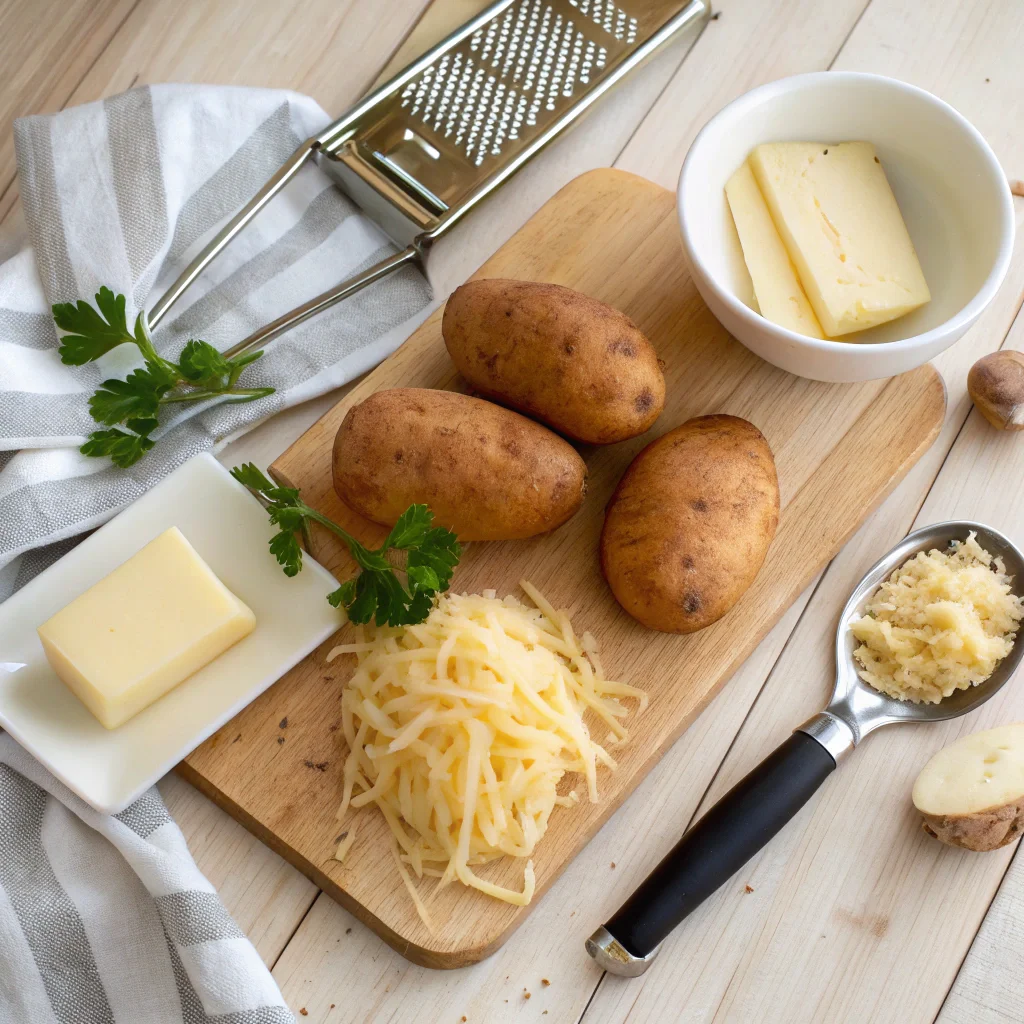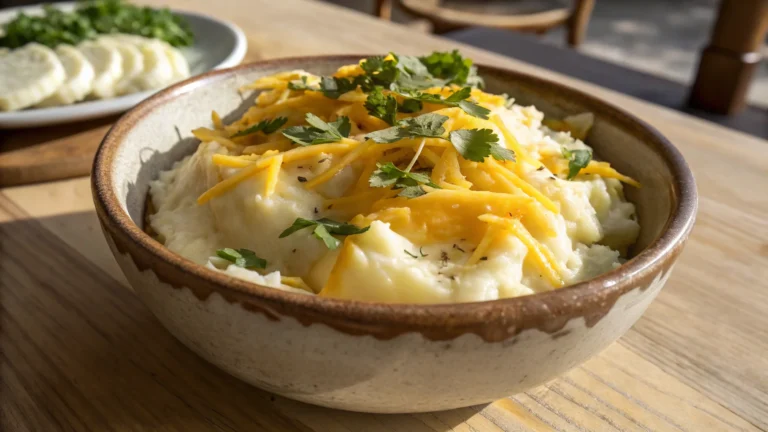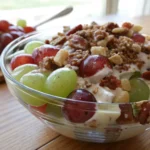What makes the perfect cheesy mashed potatoes recipe? Is it the type of potatoes used, the amount of cheese added, or something else entirely? To create delicious, creamy, and cheesy mashed potatoes that will impress anyone, it’s essential to understand the basics of mashed potatoes tips and how to apply them to your cheesy potatoes recipe.
Table of Contents
The Secret Behind Perfect Cheesy Mashed Potatoes
To achieve perfect mashed potatoes, it’s essential to understand the key factors that contribute to their texture and flavor. One crucial aspect is the starch content in potatoes, which affects how they mash and their overall consistency. Different types of potatoes have varying starch levels, and selecting the right one can make a significant difference in the outcome.
When it comes to mashed potato techniques, the role of temperature is also vital. Heating the potatoes to the right temperature can help break down the starches, resulting in a smoother mash. Additionally, the type of cheese used can greatly impact the flavor and creaminess of the mashed potatoes. By understanding these factors, you can create truly exceptional cheesy mashed potatoes that are sure to impress.
Understanding Starch Content in Potatoes
There are several types of potatoes, each with its own unique characteristics. For perfect mashed potatoes, it’s best to use high-starch potatoes, such as Russet or Idaho. These potatoes yield a light and fluffy texture, making them ideal for mashing. On the other hand, waxy potatoes like Yukon Gold or red potatoes have a lower starch content and hold their shape better when cooked, making them better suited for boiling or roasting.
For another delightful potato dish, check out this comforting Hash Brown Potato Soup Recipe that uses a different variety of potatoes for a unique texture.
The Role of Temperature in Texture
Temperature plays a critical role in achieving the perfect texture for mashed potatoes. When potatoes are heated, the starches break down, making them easier to mash. However, if the potatoes are overcooked, they can become gluey and unappetizing. To achieve the perfect texture, it’s essential to cook the potatoes until they are tender, then drain and mash them while they are still warm.
Maintaining proper cooking temperatures is critical, whether you’re making mashed potatoes or a hearty Chicken and Potato Soup Recipe.
Why Cheese Selection Matters
The type of cheese used can greatly impact the flavor and creaminess of mashed potatoes. For a rich and creamy flavor, it’s best to use a combination of cheeses, such as cheddar, Parmesan, and mozzarella. The key is to find a balance between the different flavors and textures to create the perfect cheesy mashed potatoes.
| Potato Type | Starch Content | Best Use |
|---|---|---|
| Russet | High | Mashing |
| Idaho | High | Mashing |
| Yukon Gold | Medium | Boiling or Roasting |
| Red | Low | Boiling or Roasting |
Essential Ingredients for Ultimate Cheesy Mashed Potatoes Recipe

To create the perfect cheesy mashed potatoes, it’s crucial to focus on the quality of your ingredients, particularly the cheese selection for mashed potatoes. With so many types of cheese available, choosing the right one can be overwhelming. Consider a combination of cheddar, Parmesan, and mozzarella for a rich and creamy flavor profile.
When it comes to cheese selection for mashed potatoes, it’s essential to think about the melting point and flavor profile. Here are some popular cheese options to consider:
- Cheddar: A classic choice with a sharp, tangy flavor
- Parmesan: Nutty and savory, perfect for adding depth to your dish
- Mozzarella: Mild and creamy, ideal for a smooth texture
In addition to a well-curated cheese selection for mashed potatoes, using high-quality butter and fresh herbs can elevate your dish. Consider adding some chopped parsley or chives to give your mashed potatoes a fresh and vibrant flavor. By focusing on these essential ingredients, you’ll be well on your way to creating a truly unforgettable cheesy mashed potatoes recipe.
| Cheese Type | Melting Point | Flavor Profile |
|---|---|---|
| Cheddar | Medium-High | Sharp, Tangy |
| Parmesan | High | Nutty, Savory |
| Mozzarella | Low-Medium | Mild, Creamy |
Kitchen Tools You’ll Need for Success
To achieve professional-looking and tasting cheesy mashed potatoes, having the right potato mashing tools is crucial. A key decision is whether to use a masher or a ricer, as both have their own unique benefits. Mashers are ideal for creating a rustic, chunky texture, while ricers produce a smoother, more refined mash.
When it comes to potato mashing tools, it’s essential to consider the type of texture you want to achieve. For a more rustic texture, a masher is the way to go. However, for a smoother mash, a ricer is the better option. In addition to a masher or ricer, you’ll also need a large pot for boiling the potatoes, a colander for draining, and a mixing bowl for combining the potatoes with cheese and other ingredients.
Masher vs. Ricer: Making the Right Choice
Both mashers and ricers have their own advantages and disadvantages. Mashers are great for creating a chunky texture, but they can be time-consuming to use. Ricers, on the other hand, are faster and easier to use, but they can be more expensive. Ultimately, the choice between a masher and a ricer comes down to personal preference and the type of texture you want to achieve.
Additional Equipment Requirements
In addition to a masher or ricer, there are several other potato mashing tools you’ll need to achieve professional results. These include:
- A large pot for boiling the potatoes
- A colander for draining the potatoes
- A mixing bowl for combining the potatoes with cheese and other ingredients
- A measuring cup for measuring out ingredients
- A spoon or spatula for mixing and stirring
Optional Tools for Professional Results
For those looking to take their cheesy mashed potatoes to the next level, there are several optional potato mashing tools you can consider. These include a stand mixer with a paddle attachment, which can make mixing and aerating the potatoes a breeze. You can also consider investing in a food mill or a potato ricer with multiple attachments, which can help you achieve a variety of textures and flavors.
| Tool | Description | Benefits |
|---|---|---|
| Masher | Used to mash potatoes by hand | Creates a rustic, chunky texture |
| Ricer | Used to rice potatoes for a smoother texture | Produces a smoother, more refined mash |
| Stand Mixer | Used to mix and aerate potatoes with a paddle attachment | Makes mixing and aerating potatoes easy and efficient |
Potato Selection and Preparation Techniques
Choosing the right potatoes is crucial for perfect mashed potatoes. Russet potatoes, with their high starch content, create a fluffy mash, while Yukon Gold and red potatoes add a buttery, sweet flavor. Proper preparation—washing, peeling, and evenly chopping—ensures even cooking. Understanding potato types and prep methods lets you craft delicious mashed potato variations effortlessly.
Here are some tips to keep in mind when selecting and preparing potatoes for your mashed potato variations:
- Choose potatoes that are high in starch, like Russet or Idaho, for a lighter, fluffier mash.
- Opt for waxy potatoes, like Yukon Gold or red, for a creamier, more buttery flavor.
- Wash and peel the potatoes thoroughly to remove any dirt or impurities.
- Chop the potatoes into uniform pieces to ensure even cooking.
By following these tips and experimenting with different potato varieties, you can create a wide range of delicious mashed potato variations that are sure to impress your family and friends.
| Potato Variety | Characteristics | Best For |
|---|---|---|
| Russet | High starch content, light and fluffy | Classic mashed potatoes |
| Yukon Gold | Buttery, sweet flavor | Creamy, buttery mashed potatoes |
| Red | Waxy, sweet flavor | Roasted or boiled potatoes |
The Art of Perfect Mashing
To achieve the perfect mash, it’s essential to understand the common mashed potato mistakes that can lead to unappetizing results. By avoiding these mistakes and incorporating advanced mashed potato techniques, you can elevate your dish to the next level. One of the most critical aspects of mashing is to cook the potatoes until they’re tender, then drain them and mash with the right amount of butter, milk, and cheese.
Some common mistakes to avoid include over-mixing, which can result in gluey potatoes, and under-seasoning, which can leave the dish tasting bland. To avoid these mistakes, it’s crucial to have a step-by-step guide to mashing. Here are some tips to get you started:
- Cook the potatoes until they’re tender, but still firm
- Drain the potatoes and add the right amount of butter, milk, and cheese
- Mash the potatoes gently, avoiding over-mixing
- Season the potatoes with salt, pepper, and any other desired herbs or spices
By following these tips and incorporating advanced mashed potato techniques, such as adding different cheeses or herbs, you can achieve the ideal consistency for your mashed potatoes. Remember to avoid common mashed potato mistakes, and don’t be afraid to experiment with new ingredients and techniques to find your perfect mash.
| Technique | Description |
|---|---|
| Over-mixing | Can result in gluey, unappetizing potatoes |
| Under-seasoning | Can leave the dish tasting bland |
| Advanced mashed potato techniques | Can include adding different cheeses, herbs, or spices to elevate the dish |
Best Cheese Combinations for Mashed Potatoes
When it comes to creating the perfect cheesy mashed potatoes, the right cheese selection for mashed potatoes can make all the difference. With so many types of cheese to choose from, it can be overwhelming to decide on the best combination. A good cheese selection for mashed potatoes should complement the natural flavor of the potatoes without overpowering them.
A mild cheese like mozzarella or fontina provides a creamy base for your mashed potatoes, while a sharp cheese like cheddar or Parmesan adds a rich, tangy flavor. For those looking to experiment, specialty cheeses like truffle gouda or goat cheese can add unique and sophisticated flavors to the dish. The key to a great cheese selection for mashed potatoes is finding the perfect balance of flavors.
Mild Cheese Options
- Mozzarella: adds a creamy texture and mild flavor
- Fontina: provides a nutty, slightly sweet flavor
Sharp Cheese Choices
- Cheddar: adds a rich, tangy flavor
- Parmesan: provides a sharp, salty flavor
Specialty Cheese Additions
Specialty cheeses can add a unique twist to your mashed potatoes. Consider adding truffle gouda for an earthy flavor or goat cheese for a tangy, creamy texture. The right cheese selection for mashed potatoes can elevate this classic dish to new heights.
Troubleshooting Common Issues
Even with the best techniques and ingredients, things can sometimes go wrong with your cheesy mashed potatoes. Common mashed potato mistakes include potatoes that are too gluey, too dry, or lack flavor. To rescue your dish, it’s essential to understand what might have gone wrong and how to fix it.
Some common issues and their solutions are:
- Gluey potatoes: over-mixing is often the culprit. Try adding a bit more milk or butter to loosen them up.
- Dry potatoes: insufficient liquid or overcooking can cause this. Add more milk or butter, and be mindful of cooking time.
- Lack of flavor: this can be due to insufficient seasoning or using low-quality cheese. Experiment with different seasonings and cheese combinations to find the perfect taste.
By being aware of these common mashed potato mistakes and knowing how to correct them, you can still achieve delicious results. Remember, practice makes perfect, so don’t be discouraged if your first attempts don’t turn out as expected. Keep trying, and you’ll soon become a master of cheesy mashed potatoes.
| Issue | Solution |
|---|---|
| Gluey potatoes | Add more milk or butter |
| Dry potatoes | Add more milk or butter, adjust cooking time |
| Lack of flavor | Experiment with seasonings and cheese combinations |
Creative Variations and Add-ins
Once you’ve mastered the basics of cheesy mashed potatoes, it’s time to experiment with mashed potato variations that can elevate your dish to the next level. By incorporating different herbs and spices, you can create a unique flavor profile that will leave your guests impressed. For instance, a combination of garlic and rosemary can add a savory, aromatic flavor, while paprika and chili flakes can introduce a smoky heat.
To take your mashed potatoes to the next level, consider exploring advanced mashed potato techniques such as adding texture enhancers. Some popular options include crispy bacon, caramelized onions, or roasted garlic, which can add depth and interest to your dish. You can also experiment with different types of cheese, such as truffle or goat cheese, to create a rich and creamy flavor.
Herb and Spice Combinations
- Garlic and rosemary for a savory flavor
- Paprika and chili flakes for a smoky heat
- Chives and cheddar for a classic combination
Texture Enhancers
- Crispy bacon for a smoky crunch
- Caramelized onions for a sweet and savory flavor
- Roasted garlic for a deep and nutty flavor
By experimenting with these mashed potato variations and advanced mashed potato techniques, you can create a unique and delicious dish that will impress your guests and leave them wanting more.
Master the Art of Mashed Potatoes: Expert Answers to Your Burning Questions
What Does Gordon Ramsay Put in His Mashed Potatoes?
Gordon Ramsay’s mashed potatoes are renowned for their luxurious texture and depth of flavor. He includes the following:
- High-quality potatoes: Ramsay prefers Yukon Gold or Russet potatoes for their creamy, starchy nature.
- Butter and cream: Both are warmed before adding to create a silky texture.
- Garlic: Sometimes roasted for a sweet and subtle flavor.
- Nutmeg: Just a pinch enhances the earthy notes of the potatoes.
- Salt and white pepper: White pepper avoids dark flecks and blends seamlessly.
- Potato ricer: This ensures a smooth, lump-free consistency that elevates the dish.
What Cheese Is Best for Mash?
Adding cheese to mashed potatoes enhances flavor and texture. The best options include:
- Cheddar: Provides a sharp, tangy flavor perfect for classic mashed potatoes.
- Parmesan: Adds a nutty, umami note and pairs well with creamy textures.
- Gruyere: Slightly sweet and nutty, it melts beautifully into the potatoes.
- Mozzarella: Gives a gooey, stretchy consistency ideal for a rich experience.
- Cream cheese: Makes the potatoes creamier with a touch of tang.
For added complexity, mix multiple cheeses, such as cheddar with Parmesan or Gruyere.
Is Sour Cream or Cream Cheese Better in Mashed Potatoes?
Both sour cream and cream cheese bring unique qualities to mashed potatoes:
- Sour cream: Adds a tangy flavor and a lighter texture, making the dish feel less dense.
- Cream cheese: Contributes a richer, creamier consistency with a slightly sweet undertone.
If you prefer a tangy, lighter flavor, choose sour cream. For velvety, decadent mashed potatoes, go for cream cheese.
Why Are Restaurant Mashed Potatoes So Good?
Restaurants achieve exceptional mashed potatoes by focusing on the following:
- High-quality ingredients: They use starchy potatoes like Yukon Gold or Russet.
- Generous fats: Heavy cream, butter, and even cheese are often used liberally.
- Seasoning at every step: Salt is added to boiling water and adjusted during preparation.
- Proper tools: Tools like potato ricers or food mills ensure lump-free consistency.
- Cheese combinations: Many restaurants blend cheeses for added depth and creaminess.
Why Do People Add Sour Cream to Mashed Potatoes?
Sour cream is a favorite addition because it:
- Adds a tangy brightness that balances the richness of butter and cream.
- Blends smoothly into potatoes, enhancing their texture.
- Keeps mashed potatoes moist and flavorful, even when reheated.
- Pairs well with other ingredients like cheddar cheese and chives.
What Ruins Mashed Potatoes?
Several common mistakes can ruin mashed potatoes:
- Using the wrong potatoes: Waxy potatoes like Red Bliss result in a dense, gluey texture.
- Overmixing: Too much mixing releases starch, turning the potatoes gummy.
- Adding cold dairy: Cold butter or cream cools the potatoes and prevents proper absorption.
- Undercooking: Potatoes that aren’t cooked thoroughly will create lumps.
- Skipping seasoning: Insufficient salt leads to bland potatoes.
How to Fix Ruined Mashed Potatoes
- If your potatoes are gummy, spread them on a baking sheet, drizzle with melted butter, and bake until slightly crispy.
- For dry mashed potatoes, gradually stir in warm cream or butter until the desired consistency is reached.
Bonus Tips for Perfect Mashed Potatoes
- Warm your ingredients: Heated butter and cream blend seamlessly with the potatoes.
- Salt generously: Season the boiling water and adjust to taste during mashing.
- Use a ricer or food mill: These tools ensure smooth, airy mashed potatoes without overmixing.
With these insights, you can master the art of mashed potatoes, from classic recipes to decadent cheesy variations. Whether you’re hosting a holiday dinner or preparing a simple family meal, these tips will guarantee delicious results every time.
Conclusion: Mastering Your Cheesy Mashed Potatoes Game
As you’ve learned, mastering the art of creating delicious mashed potatoes tips requires attention to detail, experimentation, and a willingness to refine your technique. By selecting the right potatoes, using the proper cooking methods, and incorporating the perfect blend of cheeses, you’ll be well on your way to producing perfect mashed potatoes that will impress your family and friends.
Print
Cheesy Mashed Potatoes Recipe: 10 Must Know Tips That Will Blow Your Mind
What makes the perfect cheesy mashed potatoes recipe? Is it the type of potatoes used, the amount of cheese added, or something else entirely? To create delicious, creamy, and cheesy mashed potatoes that will impress anyone, it’s essential to understand the basics of mashed potatoes tips and how to apply them to your cheesy potatoes recipe.
- Total Time: 45 minutes
- Yield: 6–8 servings 1x
Ingredients
3 lbs Russet or Idaho potatoes, peeled and chopped
1 cup shredded cheddar cheese
½ cup grated Parmesan cheese
1 cup mozzarella cheese (shredded)
½ cup unsalted butter (cut into pieces)
¾ cup warm whole milk (or heavy cream)
Salt, to taste
Pepper, to taste
Optional: ½ cup sour cream or cream cheese
Optional garnishes: chopped parsley, chives, or paprika
Instructions
Prep the Potatoes
Peel and chop the potatoes into uniform chunks. Rinse with cold water.Boil Until Tender
Place potatoes in a large pot, cover with cold water, and season with salt. Bring to a boil and cook for 15–20 minutes or until fork-tender.Drain and Dry
Drain the potatoes well and return them to the hot pot. Let sit uncovered for 1–2 minutes to remove excess moisture.Mash to Desired Consistency
Use a potato masher for a rustic texture or a ricer for a smoother finish. Mash gently.Mix in the Dairy & Cheese
Add butter and warm milk (or cream). Stir until incorporated. Fold in the cheddar, Parmesan, and mozzarella cheeses until melted and creamy.Season and Serve
Season with salt and pepper to taste. Stir in sour cream or cream cheese if using. Garnish and serve hot.
Notes
Use Room-Temperature Dairy: Prevent curdling and help ingredients incorporate smoothly.
Cheese Variations: Try Gruyère, Fontina, or goat cheese for elevated flavors.
Storage: Keeps for 3–4 days in an airtight container in the fridge. Reheat gently with added milk.
Make Ahead Tip: Prep and mash ahead, then bake covered at 350°F for 20 minutes before serving.
Add-ins: Roasted garlic, caramelized onions, crispy bacon, or truffle oil for next-level flavor.
- Prep Time: 20 minutes
- Cook Time: 25 minutes
- Method: Boiling, Mashing
- Cuisine: American, Southern
- Diet: Vegetarian
Nutrition
- Serving Size: 6–8 servings
- Calories: 360 kcal
- Sugar: 3 g
- Sodium: 290 mg
- Fat: 22 g
- Saturated Fat: 13 g
- Carbohydrates: 30 g
- Fiber: 2 g
- Protein: 10 g






